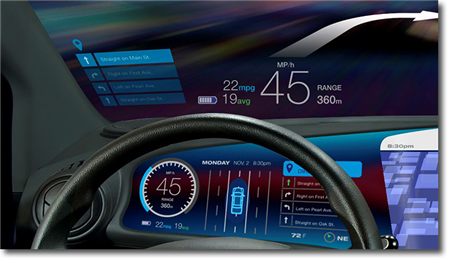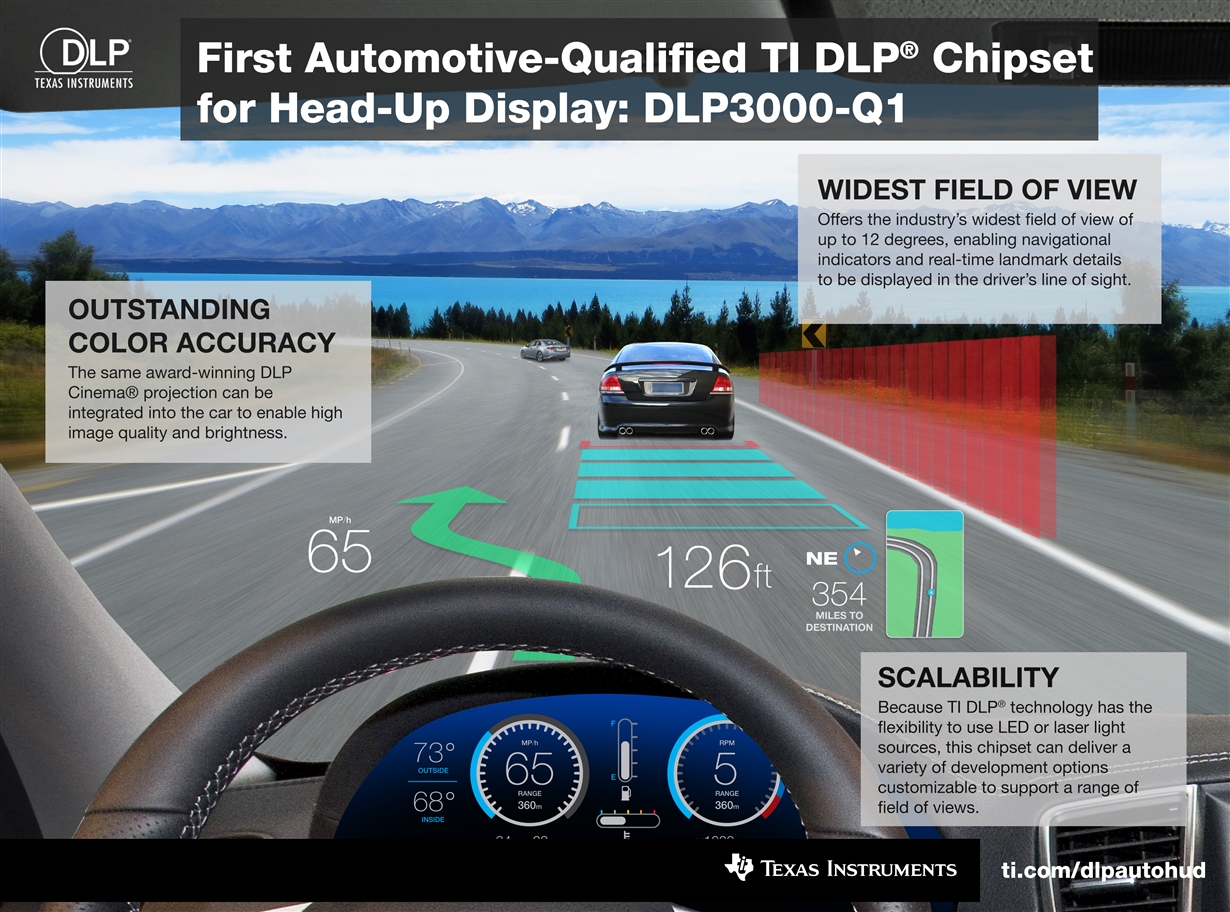(Credit: TI) - 
Clearly, the daily car commute is a dizzyingly complex task many of us take for granted, and the driver’s seat is a focal point for distractions.
According to the National Highway Traffic Safety Administration (NHSTA), more than nine Americans are killed and nearly 1,200 are injured every day in crashes involving a distracted driver.
Clearly there’s a need to consolidate and simplify the modern auto environment to help drivers focus on the road. The head-up display (HUD) is one such solution. The technology first emerged decades ago and is now showing up in cars.
Instead of a myriad of gauges, a HUD is a form of augmented reality that displays critical, relevant information directly in front of the driver’s field of view. Ongoing advances in HUD capabilities using TI DLP® technology are delivering the widest field of view in the industry, outstanding brightness and flexible development options.
Just imagine the HUD as a central point for the amount of disparate pieces of driver information. Then imagine seeing everything you need to know – speed, road hazards, oncoming traffic and more – without having to take your eyes off the road or even change your focus. With a HUD display, the key information appears to float in front of the driver’s eyes, somewhere between the windshield and the road.
At TI, we’ve developed technology that can make this dream a reality using the same proven DLP Cinema® technology, which is used in more than eight out of 10 digital movie theatre screens around the world.
Yesterday, we announced the DLP3000-Q1 chipset. Consisting of a DLP 0.3-inch wide video graphics array (WVGA) digital micromirror device (DMD) and DLPC120 controller, the new chipset allows for the development of a HUD with the industry’s widest field of view (FOV) up to 12 degrees.
Driven by improvements in FOV, image quality and brightness, head-up displays are poised to keep your eyes on the road and have a more informed experience.
Additional resources:
- Read our press release announcing this innovation
- Read TI’s HUD white paper
- Learn more about TI’s innovative automotive portfolio
- Visit the DLP Design House Network
- Alan Rankin -


